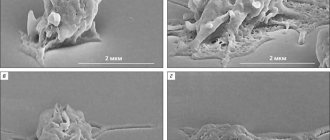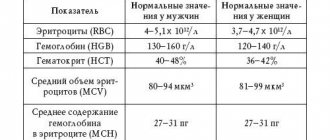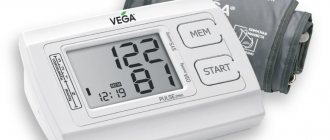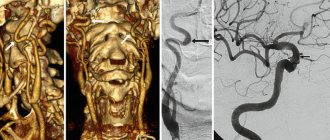Area of use and principle of operation
Oxygen is needed by the human body for metabolism in the body. Without it, ATP synthesis does not occur. The inhaled air enters the lungs, from where it is transported through the capillaries. The average percentage of saturation is 95-98%. If the oxygen level drops to 94%, then drug therapy becomes necessary. Emergency medical care is required when 91% is reached.
The pulsometry technique involves the use of a medical pulse oximeter equipped with a peripheral type sensor that houses a light source. The degree of oxygen absorption depends on the level of hemoglobin saturation. Only four oxygen molecules are attached to each Hb molecule. In accordance with this criterion, the photo editor records changes in blood color. Pulse oximeters have also been developed that are used only to measure the level of methemoglobin or carboxyhemoglobin - CO-oximeter.
A pulse oximeter measures pulse rate and oxygen saturation of capillary blood. The device records heart contractions in the form of a simple graph and, in case of hypoxia, gives an alarm signal. The non-invasiveness and ease of use of the pulse oximeter make the device indispensable for one-time tests and long-term monitoring. The operating principle of a pulse oximeter is based on the transillumination of soft tissues with light rays divided into infrared (940 nm) and red (660 nm) wavelengths.
A pulse oximeter is needed for:
- assessment of the state of the respiratory system;
- diagnosis of obstructive pulmonary diseases;
- monitoring the condition of patients during anesthesia and after operations;
- care for premature babies in neonatology.
The advantages include an intuitive interface and the ability to monitor indicators for a long time. Patients can buy a pulse oximeter and use the device themselves. All devices have memory. The results obtained are transferred to a computer, which is very convenient for home use, as it allows you to provide the results to the doctor.
The pulse oximeter is an early warning system. Periodic monitoring of the level of hemoglobin oxygen saturation makes it possible to detect hypoxia much earlier than clinical signs appear, such as cyanosis (blue discoloration of the tongue and lips).
How to use a pulse oximeter
The medical monitoring and diagnostic device is easy to use independently. The main advantage is that there is no need for blood sampling to obtain data. There are two types of pulse oximeters - reusable and disposable. Reusable devices are indispensable for patients undergoing oxygen therapy. The patient independently monitors O2 levels in the blood. Pulsometry allows you to promptly identify disorders occurring in the body and consult a doctor in time.
Portable pulse oximeters are charged from the mains or run on AA batteries. You can measure your heart rate and saturation index yourself or use the help of loved ones. Can be used for patients who are unconscious or in serious condition.
Rules for using a pulse oximeter:
- Check the charge level displayed on the monitor. The charge should not be low. Otherwise, the results obtained may be distorted. Remove dust from the sensor using a dry soft cloth.
- After turning on the pulse oximeter, you need to wait 1-2 minutes, which is necessary for loading. During the measurement procedure, you should be located away from sources of electromagnetic radiation and bright light.
- When performing pulse oximetry, you must remain motionless. The device is equipped with a sensor that is attached to the nose, ear or finger. When using finger pulse oximeters, the nail should not be coated with varnish.
- The measurement is carried out in 25 seconds, during which you must not move so as not to distort the result.
The pulse oximeter monitor will display the oxygen level in hemoglobin and heart rate indicators. After completing the measuring procedure, the device must be turned off.
The operation of the pulse oximeter is influenced by a number of factors: trembling, external light, rhythm and pulse rate, as well as abnormal hemoglobin. The device cannot be used to judge the degree of ventilation. The pulse oximeter can only show the degree of oxygenation. The delayed signs of hypoxia during airway obstruction should not be overlooked.
Characteristics
Sensor displays are:
- monochrome;
- colored.
Also read: How to properly keep a blood pressure diary
Modern models have a memory function. The minimum heart rate is 20 beats per minute, the maximum is 270. In cold weather, this device will not be able to work, since this is only possible in the range from 20 to 65˚C.
So in the cold season it is better to use other monitoring methods.
The finger pulse oximeter attracts attention with the following positive characteristics:
- Miniature.
- Low energy consumption.
- Ease of use.
It is equipped with a sensor that is highly sensitive to light and reads the readings received by the indicator.
Models of such microcontrollers differ in their characteristics. For lovers of running or swimming, some models have a water or moisture protection feature.
Therefore, swimming in closed or open water, running in the rain is not a hindrance if you have such a pulse meter on your finger.
You should choose the appropriate option after reading the instructions first.
It contains information about what the device is, how to use it correctly and what functions it is equipped with.
Niksy devices
For example, the popular Niksy heart rate monitor runs on batteries for 30 hours without interruption, measures heart rate in the range from 30 to 254 beats, and automatically turns off if the device is not put on your finger for more than 8 seconds.
Pulse oximetry with such a device is possible both at home and while the patient is in the hospital during therapy or resuscitation. The device’s readings are used during anesthesia, surgical procedures, and even in pediatric treatment.
It is convenient to use during medical examinations before or after sporting events.
The device is unpretentious in maintenance: it is enough to periodically change the batteries, and also treat it with alcohol before and after use. But there are also caveats: this device cannot be used continuously (the data will be distorted).
The heart rate monitor has an indicator that indicates low battery charge. If the device is not used for a long time, remove the batteries from it.
This product can be purchased in online stores, the price may vary, depending on the manufacturer.
Oximax
In the ranking of pulse measuring devices, the first positions are occupied by new generation devices manufactured using Oximax digital technology.
This technology ensures high measurement accuracy even with a weak signal or any interference.
The age of users of this device is not limited, which has ensured its great popularity. It is even used in the diagnosis and treatment of newborns in the neonatal period and infants.
Characteristics of the Nellcor Oximax N-65 finger heart rate monitor:
- 20 hours of continuous operation.
- A clear image on the display allows you to read information at any time of the day and in any lighting.
- Ease of operation (buttons that provide multiple functions).
- Sound signal alerts about critical heart rate values.
- Measures pulse within 20–250 beats.
- Small dimensions.
- High quality workmanship.
- Fast and highly reliable measurements.
Such characteristics have ensured the popularity of the device among athletes and doctors; it is even used in ambulances and air ambulances.
Finger pulse oximeters
The measuring procedure is carried out using the optical method. The device’s sensor contains an emitter that supplies two light waves, infrared and red, into the venous blood. A certain part of the light is absorbed by hemoglobin in the blood, which depends on the level of O2 saturation. Unabsorbed waves are captured by a photosensor. The microprocessor of the finger pulse oximeter analyzes the degree of absorption. Information about heart rate and oxygen saturation is displayed on the device screen.
Finger pulse oximeters are attached to the index finger. There is no need to install both a cuff and a sensor on one limb at the same time. This may lead to distortion of the obtained result. Excessive pressure should not be applied to the finger tissue. You need to insert your finger into the pulse oximeter hole until it stops. The photodetector and the LED must be located on the same straight line, opposite each other.
Children's pulse oximeters
To use the measuring and diagnostic device you do not need to have a medical education. Neonatal pulse oximeters are indispensable when it is necessary to determine the level of oxygen in the blood of newborns and the pulse rate. This approach allows you to stop attacks in time and begin treatment.
Parents deservedly appreciate the advantages of pulse oximeters for children, since the devices eliminate the need for constant visits to the laboratory to donate blood for analysis. By purchasing a children's pulse oximeter, parents will be able to constantly monitor blood saturation in children.
The medical device is easy to use. There is no pain or discomfort during the procedure. Thanks to this, you can use the device even while sleeping.
How to determine the presence of water underground
Before drilling a well on a site, it is necessary to conduct a thorough study of the soil in order to determine the places with the smallest depth of aquifers. When ordering a professional service, the performers take on this function themselves, using various means of geological exploration. Finding an aquifer on your own is not so easy, but it is quite possible if you use a device to find water underground. Such a device greatly simplifies the process and allows one to determine with sufficient accuracy a suitable location for drilling.
Groundwater location diagram
Drilling operations will sooner or later make it possible to reach the aquifer in any area. When this happens, after 10 or 100 meters, depends on the geological section of the soil. Since the depth of drilling affects its complexity and cost, it is very important to know the location of groundwater on the site before starting work.
Location of aquifers
The high water is usually already a few meters from the surface of the earth. However, it is not suitable for drinking and most household needs, as it is saturated with wastewater, which has a high degree of pollution.
For your information. A device for searching for water in an area can react to high water in the same way as to other horizons. Therefore, to determine the correct drilling location, it is important to learn how to analyze the data obtained.
At a depth of 10-40 m there are interstratal aquifers, which are often suitable for drinking and cooking. In this case, the waterproof rock is sand (clay), which delays the penetration of surface water. Most often, it is the sandy horizon that the owner of the site focuses on when drilling a well independently.
The cleanest is the artesian spring, which is located at a depth of 40 m, which makes finding water much more difficult. For such purposes, exploratory drilling or specialized instruments are used that can detect water at a great distance from the surface of the earth.
Devices for searching for water on the site
The use of special instruments for searching for groundwater allows you to find the optimal place for drilling a well in a relatively short period of time.
Aneroid barometer
If there is a natural body of water near the site, then the depth of the source can be found using an aneroid barometer - without a liquid device for measuring atmospheric pressure.
Aneroid training barometer
It is known that 0.1 mm of mercury column of a barometer corresponds to a height difference of 1 m. Having learned the readings of the device on the shore of a reservoir, it is necessary to compare them with the data at the proposed drilling location.
Calculation example. The barometer reading at the natural water source is 740 mm, and directly at the site – 738.4 mm. The difference between the readings is 1.6 mm, that is, the depth of the well for this aquifer will be about 16 m.
Device "Pulse"
Under the influence of lunar attraction and Earth's gravity, aquifers tend to the surface, thereby creating inter-layer pressure. During the movement of such waters, a spring vein is formed, which, passing through rocks, becomes electrified and acquires geomagnetic pulsations.
The “Pulse” water search device, which is easy to assemble with your own hands, allows you to detect electromagnetic vibrations of an aquifer. The positive and negative electrodes are grounded to a depth of about 10 cm and connected to a voltmeter. The closer the location of the spring vein, the higher the voltmeter readings.
Interesting. Above powerful pressure conductors, the voltage increases several times compared to the initial readings of the device.
Schematic diagram of the Pulse device
Device "Hydroscope"
The work of "Hydroscope" involves probing aquifers based on the effect of nuclear magnetic resonance of water protons in the Earth's magnetic field. Unlike other technological means of searching for groundwater, this device does not use indirect data, but a direct signal from protons, which minimizes the error in the final result.
The main components of the Hydroscope are:
– a circle-shaped antenna for transmitting and receiving signals;
–pulse power generator;
– block of capacitors for excitation of nuclear magnetic resonance;
– control unit for processing received data.
The device is usually installed on a vehicle with a high level of cross-country ability, for example GAZ-66, and is used for geological surveys of the area.
Hydroscope" - a professional device for finding water
Traditional methods for identifying aquifers
Searching for water using specialized instruments is not the only method of detecting aquifers on the site. And although traditional methods are not always highly accurate, in the absence of any other option they sometimes help determine a suitable place for drilling.
–Use of silica gel
Silica gel belongs to the category of substances that can absorb and retain moisture. It is placed in a clay container (pot), which is buried to a depth of about 1 m. After a day, the container is dug up and weighed. The more moisture the silica gel absorbs, the closer the aquifer is. To expand the search area, you can use several identical clay pots with an equal amount of silica gel.
– Observation of plants
A good knowledge of botany will help you understand where the water is in the area. Moisture-loving vegetation grows in places close to an underground source. It is also worth focusing on how willows and birches grow. Usually the crown of these trees slopes towards the water.
–Dowsing (dowsing)
This method is one of the most ancient for exploring the area. Despite the fact that today the reliability of dowsing is questioned by most experts, the method continues to be popular in determining spring veins on the site
Dowsing is considered by many to be an occult way of searching for underground water.
It should be noted that such methods provide only an indirect idea of the location of aquifers. Accurate data can only be obtained through exploratory drilling or sophisticated water-finding instruments used by well drillers.
Share:
Manufacturers
The most popular pulse oximeter for newborns is Onyx. The device is suitable for children weighing up to 2 kg. In this case, the sensor is not fixed on the finger, but is applied to the foot. The result obtained will be as accurate as possible, regardless of which part of the body the sensor was attached to.
Armed pulse oximeters are designed for single measurements. The devices are used in hospital settings to monitor patients with chronic diseases of the respiratory system and cardiovascular system. The YX300 model is designed for fitness centers and gyms to control the level of physical activity.
How to check the operation of a homemade device?
This operation is called a big word - “calibration”. In fact, it comes down to a simple check of the “activity” of the dowsing frame. The procedure consists of several stages. It is better to carry out the first test not in a house or apartment, but in an area where there is a source of water.
- First, they move a few meters away from the well or borehole. There should be no underground communications, plants (trees, bushes) or debris in this place that could cause the frame to rotate.
- The frame antennas are positioned strictly parallel to each other, their ends should “look” forward. They are fixed in such a way as to exclude even the slightest vibration or movement.
- Then they begin to slowly approach the water source. If the preparation was carried out correctly, then with each subsequent step the elements will gradually “attract”.
- The tests don't stop there. To double-check the effectiveness of the frame, it is brought closer to other objects. When moving towards the garbage, the whiskers must “recoil” from each other, and when approaching the tree they must come together again.
Despite the simplicity of the equipment, any novice dowser is not immune to mistakes. You need practice, the habit of interacting correctly with devices, understanding their reaction. They say that the frame also gets used to a specific person, to his energy and hands. Therefore, practicing dowsers do not recommend using other people’s designs, or giving your devices to anyone, even for temporary use. For the same reason, the favorites are not purchased devices, but those frames that are made independently.
Fatigue is a bad companion. To guarantee fruitful work, a person must rest before the study and get rid of negative emotions. One of the best ways to recharge yourself with positive energy is long walks in the forest; mushroom pickers and berry pickers are well aware of it.
However, for dowsers, you do not need to take baskets or backpacks with you, but only the frame. This is a great way to find out exactly how a homemade biolocator will react to various “living” objects - trees, shrubs, anthills or natural bodies of water.
Where can I buy
We offer to order pulse oximeters with a registration certificate at an affordable price. All devices comply with a set of registration documentation in accordance with the established requirements of the Federal Service for Social Development and Health. You should first consult your doctor. If you need to carry out the diagnosis once, then it would be more advisable to go to the clinic.
The cost of pulse oximeters for medical purposes depends on the model and averages $20-30. Luxury class devices cost 2-3 times more. They are distinguished by the presence of removable sensors, built-in memory and an alert signal. The service life of the device, if the recommendations for use are followed, is at least 5 years. Each pulse oximeter comes with a 1 year warranty.











